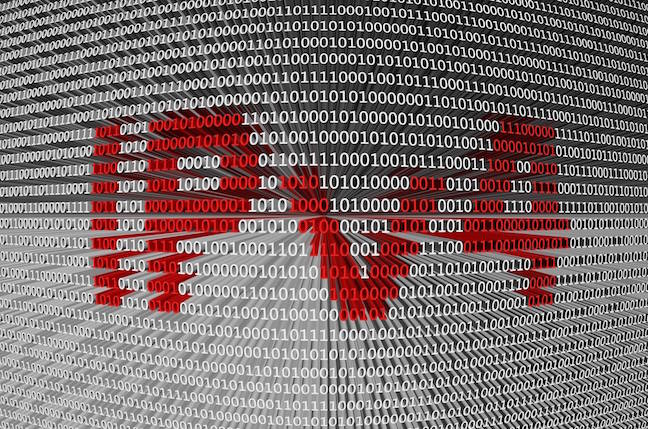AWS: IPv4 Addresses Cost Too Much, So Youre Going To Pay

Cloud giant AWS will start charging customers for public IPv4 addresses from next year, claiming it is forced to do this because of the increasing scarcity of these and to encourage the use of IPv6 instead.
It is now four years since we officially ran out of IPv4 ranges to allocate, and since then, those wanting a new public IPv4 address have had to rely on address ranges being recovered, either from from organizations that close down or those that return addresses they no longer require as they migrate to IPv6.
If Amazon's cloud division is to be believed, the difficulty in obtaining public IPv4 addresses has seen the cost of acquiring a single address rise by more than 300 percent over the past five years, and as we all know, the business is a little short of cash at the moment, so is having to pass these costs on to users.
"This change reflects our own costs and is also intended to encourage you to be a bit more frugal with your use of public IPv4 addresses and to think about accelerating your adoption of IPv6 as a modernization and conservation measure," writes AWS Chief Evangelist Jeff Barr, on the company news blog.
The update will come into effect on February 1, 2024, when AWS customers will see a charge of $0.005 (half a cent) per IP address per hour for all public IPv4 addresses. These charges will apparently apply whether the address is attached to a service or not, and like many AWS charges, appear inconsequential at first glance but can mount up over time if a customer is using many of them.
These charges will apply to all AWS services including EC2, Relational Database Service (RDS) database instances, Elastic Kubernetes Service (EKS) nodes, and will apply across all AWS regions, the company said.
However, customers will not be charged for IP addresses that they own and bring to AWS using Amazon's BYOIP feature. AWS offers a free tier for EC2, and this will include 750 hours of public IPv4 address usage per month for the first 12 months, starting from the same date the charges do.
To try and help customers get a handle on how this might affect their AWS bill, the company said it is adding information on public IPv4 addresses to the AWS Cost and Usage Report (CUR). It also unveiled a new feature of Amazon VPC IP Address Management (IPAM) called Public IP Insights, which is intended to simplify analysis and auditing of public IPv4 addresses.
10 years later
It is now more than a decade since IPv6 was officially launched, but adoption has been slow and gradual as many organizations saw little need to change at first, especially when managing a migration from the older standard to the new one was likely to be complex.
Although the world officially ran out of unallocated IPv4 addresses in 2019, according to the European regional internet registry RIPE NCC, it posted figures last year showing that the IPv4 routing table still has six times as many entries as that for IPv6.
However, this apparent disparity may be slightly misleading, it claimed, as internet registries have taken advantage of the massive 128-bit address space of IPv6 to ensure that "organizations receive blocks that are, in many cases, large enough to cover all their future addressing needs" when allocating new address ranges, whereas IPv4 saw ever smaller allocation sizes as the address space filled up.
- IPv6 for Dummies: NSA pushes security manual on DoD admins
- Reverse DNS queries may reveal too much, computer scientists argue
- Microsoft to kill off old access rules in Exchange Online
- OVHcloud opens up Bring Your Own IP service for IPv4 failover
"Even once all networks have deployed and announced IPv6, we can expect the routing table to be smaller than that for IPv4," RIPE NCC claimed.
RIPE NCC also quoted IPv6 adoption by end users last year, as estimated by Google and APNIC, the regional internet address registry for the Asia-Pacific region, as being between 30 percent and 40 percent.
But as The Register wrote back when IPv4 addresses officially ran out, it is going to be with us for a good few years yet. RIPE NCC was predicting then that it might take "five to 10 years" before the world starts to truly abandon the IPv4 address space. Four years of that have already passed, and IPv4 still seems to be going as strong as ever. ®
From Chip War To Cloud War: The Next Frontier In Global Tech Competition
The global chip war, characterized by intense competition among nations and corporations for supremacy in semiconductor ... Read more
The High Stakes Of Tech Regulation: Security Risks And Market Dynamics
The influence of tech giants in the global economy continues to grow, raising crucial questions about how to balance sec... Read more
The Tyranny Of Instagram Interiors: Why It's Time To Break Free From Algorithm-Driven Aesthetics
Instagram has become a dominant force in shaping interior design trends, offering a seemingly endless stream of inspirat... Read more
The Data Crunch In AI: Strategies For Sustainability
Exploring solutions to the imminent exhaustion of internet data for AI training.As the artificial intelligence (AI) indu... Read more
Google Abandons Four-Year Effort To Remove Cookies From Chrome Browser
After four years of dedicated effort, Google has decided to abandon its plan to remove third-party cookies from its Chro... Read more
LinkedIn Embraces AI And Gamification To Drive User Engagement And Revenue
In an effort to tackle slowing revenue growth and enhance user engagement, LinkedIn is turning to artificial intelligenc... Read more

